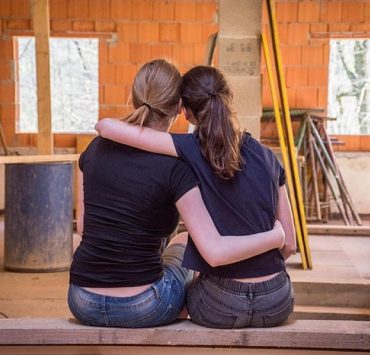Mama Sita Sauces and Mixes: Modern Convenience as Innovation
She was born into a family of what some people may call food royalty, with her grandmother Doña Engracia Reyes hailed as one of the pillars of local cuisine and the founder of beloved Filipino restaurant Aristocrat.
While Clara Reyes-Lapus has thousands of fond memories of family members bustling about in the kitchen, she remembers her mother, Teresita Reyes, also known as Mama Sita, the most. This dynamic lady inherited Doña Engracia’s devotion to Filipino food and would often spend hours writing down heirloom family recipes and precious tips on cooking when she wasn’t experimenting in front of the stove. “She was always curious, and liked to read and research. She tried different cuisines and sought out unusual ingredients,” Clara recalls. “When food processors came out, she was very interested in them because she always liked finding ways to make things easier in the kitchen.”
But what Mama Sita loved most was sharing what she learned from her research and travels. One day, she came home from an extended trip to the United States and asked a favor from her son-in-law, Bart Lapus. “My husband is a biologist who was also into experimenting with different things. She actually called him a henyo,” Clara laughs. “She asked him to experiment with the sampaloc and find a way to preserve it so that she can take it with her during her travels.”
Apparently, Mama Sita had been cooking sinigang and other Filipino dishes for her relatives abroad because she was worried about them consuming burgers, hotdogs, and supermarket food all the time. “She always cooked containers of ulam for them and stocked them in the freezer when she visited, but what about those times when she wasn’t around?”
It was from this small seed of an idea, plus Mama Sita’s natural curiosity and enterprising spirit, from which the mammoth tree of the now hugely successful company grew. Mama Sita, with the help of Bart and Clara, would go on to create a line of sauces and mixes that became kitchen staples both here and abroad.
“Of course, it’s decades later so now, we look back at it with fondness. But it wasn’t easy,” Clara’s husband, Bart says. “We made many mistakes but we weren’t afraid of laughing at ourselves and trying again. That was our best-kept secret. That, and Mama Sita.”
Nanay Pacing’s Peanut Butter: No Shortcuts to Success
Nanay Pacing’s products are just like her and her name—all of them evoke warm memories of home and the feeling of comfort a familiar, well-loved dish brings. And nothing is more familiar than good ol’ homemade peanut butter.
Pacita Camacho Tolentino is no stranger to taking business risks. Before moving to Baler, Aurora in 1966, where she is now a local legend, she lived in Cabanatuan, Nueva Ecija selling everything from used clothes to rice cakes. While Tolentino is a natural in the kitchen and made good money selling her homemade kakanin, the local delicacies she patiently made every day spoiled easily. Her quest to create a new product that had a longer shelf life led to the birth of her now-popular peanut butter.
Her version is good because it’s not like the cheap, factory-made versions that often leave a peculiar aftertaste. Tolentino takes pains (and pride) in the tedious process of selecting and preparing the best ingredients for her homemade spread. For example, while other peanut butter makers just throw the whole sack of nuts into the mix, she takes the time to remove the skin and weed out the rotten or dirty ones from each batch. She also doesn’t use any preservatives or oil in her peanut butter recipe, guaranteeing that she sticks only to the good stuff.
No wonder these bottles of creamy, chunky goodness have been a hit among locals and visitors alike. Locals love serving their suman (rice cake) with her peanut butter on the side, and balikbayans hoard bottles of the spread whenever they’re in town.
Tolentino also sells homemade coco jam (made with pure coconut milk), native delicacies like suman, sapin-sapin, puto, bibingka, and biko, and other locally made handicrafts in her small café in Baler.
Mrs. Graham’s Cafe: Standing Out With Unique Flavors
“People always ask me how I named my café. It’s actually my real name, my married name. Anna Graham. My husband is half-Canadian, but he grew up in Cebu. It’s funny how customers are so surprised when they meet me. I guess they were half expecting to meet an old Caucasian lady.”
It began with an obsession with macarons. Graham would always buy them for dessert whenever she had the chance, but she initially found them pretty expensive for such a small piece of pastry. It was only until she started baking them at home that she began to appreciate why the dainty bites of meringue were worth so much.
The making of macarons is a very delicate, laborious, and tricky process, but Graham enjoyed the challenge. She would bring the fruits of her labor to family gatherings and it wasn’t long before other relatives and friends started asking her to bake for them, too.
When Graham joined the annual Best Food Forward festival on a whim back in 2013 and became an instant success at the event, the orders started pouring in. Before she knew it, Graham had a home baking business on her hands.
The next natural step was to open a store. Graham knew it was a big risk since the business was growing at a very fast rate, but when she stumbled upon an available space along Scout Rallos near her brother’s school, she took it as a sign. “At first, we were scared to do it. But I knew that if I didn’t do it now, I might not ever be brave enough to do it in the future.”
So Mr. Graham crunched the numbers, found that it was possible, and Graham finally decided to take the leap. “We were getting amazing feedback and we knew we had something unique to offer.”
Macarons aren’t hard to find now in Manila, but Graham’s creations easily stand out because of their unique flavors and concepts. “We have variants that you won’t find in other shops like Champorado with Tuyo, Bibingka with Salted Egg, Churros, Pancake, and even Four Cheese and Cheetos.”
Anna doesn’t stop there, however, and continues to dream of new flavors for her customers to try. Thankfully, the local food scene grows more sophisticated and adventurous every day so Mrs. Graham’s unusual varieties will always have a home in people’s hearts and tummies.
Mom and Tina’s Bakery Cafe: An Extension of the Family’s Home
“It was really just a hobby, at first. I learned how to cook and bake from my mom when I was a kid, and I sold the pastries I made in school for fun. People liked it so I kept doing it while I was growing up,” says Tina Santos.
As an adult, she also remembers spending many weekends with her mom and her sister’s friends setting up makeshift tables at community bazaars and filling them with all their favorite things, from delicious pastries to homemade quilts, pillows, and even fresh flower arrangements.
It was obvious, this early on, that they had found their niche by recreating homey experiences with things they made from their very own hands.
Encouraged by their initial success, Santos took a stab at setting up her own small store, the Village Sweet Shop, in Quezon City. It did very well, but being the lone baker at that time, Santos was quickly overwhelmed by all the orders pouring in. “I was already married with a family then, and my son threatened to run away and live with his lola because I wasn’t spending enough time with him. He was three at that time,” she laughs as she remembers her sad but resolute decision to shelve the business for a while.
Success was sweeter the second time around for Santos, however, when she finally decided to go at it again by opening a small pastry counter with her mom in Pasig, at her father’s urging. They were surprised but happy at the warm reception of the food and started slowly adding more items to the menu and floor space to expand the shop until it became a full-fledged 160-seater café.
The name they chose was simple but apt for a business that grew from a shared love of cooking between mother and daughter, and all those days spent together in the kitchen long ago.
All the dishes are homemade, in the sense that, they are the same stuff they serve at their home. “We don’t serve food that we don’t like to eat,” she says. Consequently, it takes quite some time for her to release new dishes because the family, comprised of about 60 members, has to approve of them first. This nature of being family-centric best represents the brand.
Decades (and few new branches) later, it’s a name that is associated with food and family traditions that have stood the test of time. New restaurants pop up around Manila all the time, but Mom and Tina’s is still standing strong.
What’s their secret? “We only serve food that we’d be proud to have at our own dining table.” And that’s the kind of philosophy that never goes out of style.
Writer: DIANNE SIBAL
ART LEVENSPEIL SANGALANG




